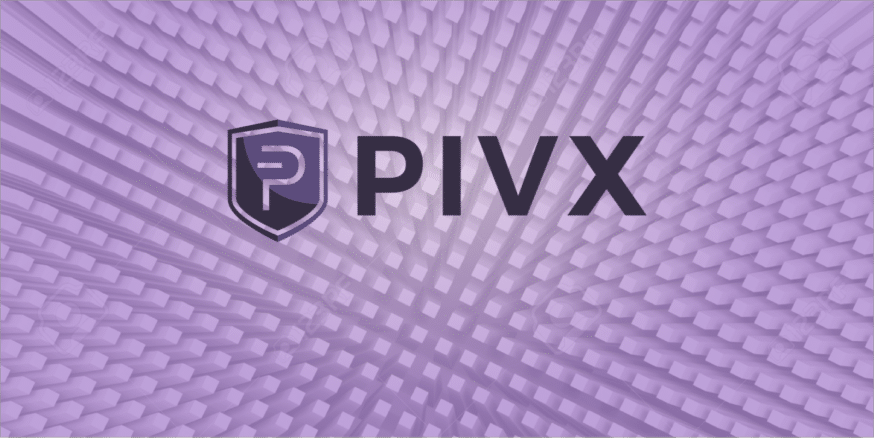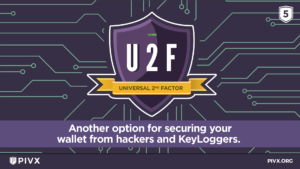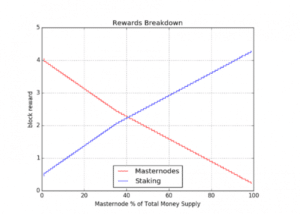- PIVX: The New Privacy Coin on the Block(chain)
- About PIVX
- Point of Sale and Wallet
- Coin Supply and Sustainability
- Community Governance and Staking
- Private and Instant
- Conclusion
PIVX: The New Privacy Coin on the Block(chain)
PIVX (or Private Instant Verified Transaction) is a privacy-centric Proof-of-Stake cryptocurrency forked from DASH. The PIVX Manifesto focuses on community governance and a decentralized project from the technology itself to how project proposals are voted on and implemented.
As the name implies, PIVX is attempting to build a usable digital means of exchange that is easy to spend privately and securely in everyday life. To this end, the main focuses of development are minimizing transaction times and fees while maintaining privacy and security.
The PIVX community is vibrant and global, with active populations on all of the major chat platforms (Discord, Reddit, BitcoinTalk, etc.) as well as a public roadmap and lots of resources for interested investors and community members to learn about the technology and get involved.
The core team welcomes participation from anyone willing to put in the time and effort, and all community proposals are entertained, discussed, and voted on by invested community members.
In this PIVX guide, we’ll go over some basic history about the project, the PIVX mobile wallets, how staking and Masternodes work, and technical features of the network and token.
About PIVX
PIVX is was launched on January 31, 2016, by two DASH community members.
The founders admired the DASH technology but wanted to see some changes. They moved to a completely Proof-of-Stake system as opposed to DASH’s Proof-of-Work system and implemented what they saw as a fairer reward system that used a see-saw mechanism to auto-balance reward payouts (this is gone into more detail in the staking section below).
They saw privacy as a critical component of a daily means of exchange and set out to combine the “digital cash” ethos of DASH that prioritizes fast, cheap payments with more advanced privacy and anonymity. Their hope is to become the go-to payment method for peer-to-peer transactions and in-store exchanges.
Point of Sale and Wallet
As a coin focused on being digital cash, a lot of attention is being paid to the mobile wallets that will enable users to spend their PIVX in stores and with other users. The idea is to create a simple app that lets you buy anything right from your phone like you would with Venmo or Apple Pay. The wallet promises to be flexible, secure, and convenient. The Android wallet was released on August 1, 2017, and the iOS wallet is set to be released by the end of 2017.
The wallet comes equipped with security measures like 2-factor authentication (which is pretty expected from most secure apps these days) and also Universal 2-Factor, which makes use of a hardware dongle to provide an extra layer of security when accessing your funds. The PIVX team wants their wallet to be your bank so they can assist you in managing your funds to make buying and sending a breeze while maintaining complete security. They’re pulling out all the stops when it comes to the latest security measures and want to see the PIVX wallet become the cornerstone of digital asset storage.
The wallet roadmap includes the ability to create escrow agreements with other users, enabling users to make use of the wallet to transact directly with peers for goods and services in a safe and efficient manner. This makes the wallet not only a storage for your assets but also a peer-to-peer marketplace and payment processor, like Paypal. Encrypted messaging built into the wallet is aimed at making the PIVX wallet the easiest way to arrange sales, send funds, receive payments, and power commerce in all contexts.
Coin Supply and Sustainability
The PIVX network allows for 2.6 million PIVX tokens to be minted per year forever, with 90% of the minted coins going to staking wallets and Masternodes (staking is covered in the next section), and 10% going to fund budget proposals voted on by the Masternodes and stakers.
This lack of a maximum coin supply makes PIVX function similar to a traditional currency, as inflation is introduced to the system to encourage daily usage and avoid hoarding. The inflation is around 4% per year, but instead of simply devaluing your currency like the Fed does when it prints Dollars, all those minted coins are going directly to holders of PIVX, offsetting the effect of inflation by spreading the profits.
While the coin supply will grow indefinitely, there is a “soft cap” that throttles the rate of inflation imposed by burning transaction fees based on the traffic level of the network. Once the number of transactions reaches a certain threshold, transaction fees are “burned,” meaning that a number of coins equal to the transaction fees are permanently removed from circulation.
Community Governance and Staking
There are two ways to earn rewards for contributing to the PIVX network: Masternodes and staking.
A network of Masternodes, users holding coins as collateral, are used to verify and anonymize transactions, store the blockchain, and vote on community proposals, and in return pay out dividends in the form of PIVX rewards.
Masternodes require a holding of 10,000 PIVX in the PIVX-Qt wallet available from the pivx.org website. The budget, development roadmap, and any major community decisions are decided by this voting mechanism, decentralizing the governance of the project and putting the decision-making power in the hands of those invested in the success of the technology.
Staking coins are used to secure the network and to release new blocks (think “mining” in regard to other coins like Bitcoin). Any amount of PIVX can be staked in the wallet, and recently a proposal was passed to give some voting rights to all stakers. This means that you don’t need to hold a full 10,000 PIVX to earn rewards and vote. Each block (every 60 seconds) a reward is released at random in chances proportional to the amount of coins being staked.
The more coins you’re holding, the higher your chance, but every staking wallet will eventually receive some rewards. The network uses a see-saw mechanism to balance the rewards between Masternodes and traditional staking, auto-balancing the reward frequency and size as the number of nodes changes. Your expected returns from staking or running a Masternode can be calculated using the Returns Calculator a community member put together. To learn more about running your own Masternode check out the official Masternode website. To learn more about staking coins in the PIVX wallet or other opportunities to earn PIVX, take a look at the reward page.
Private and Instant
PIVX employs a custom version of the popular Zerocoin protocol to anonymize transactions by obfuscating the addresses associated with coins. It’s based on the libzerocoin technology that many other privacy coins employ, but the much of the PIVX code is custom-built. As opposed to Dash and Zcash, PIVX can be completely anonymous, preventing blockchain analysis from revealing recipients and senders.
This in-house version of Zerocoin produces smaller and faster transactions than the original libzerocoin library employed by other coins, which allows them to provide privacy (which usually comes with added transaction fees and speed reductions) while also working to live up to the goals of super fast transactions and negligible fees. They also added a mechanism for auto-minting anonymous coins, which ensures that there are always enough anonymous coins in circulation to secure the network and keep things private.
To spend coins anonymously, users need to convert their standard PIVX tokens into ‘zPIV’ tokens and then send them to any PIVX address. On the other end, a user receives PIVX tokens just like any normal transaction, but thanks to Zerocoin, the transaction is both verifiable on the blockchain and anonymous as to who sent and received those coins. Moving forward, the community is aiming to decrease the added costs of anonymity, moving more and more of the total coin supply over to private zPIVs.
Using what the PIVX community calls SwiftX, transactions are nearly instant and coins are spendable within seconds of being sent. With a block time of 60 seconds and a global network of Masternodes constantly verifying transactions, PIVX aims to make instant spending and receiving a reality. This is further enabled by very small transaction fees, usually around the order of fractions of cents per transaction. This is vital to the mission of owning your day-to-day purchases and payments and goes a long way toward paving the way for PIVX to take a big role in the space moving forward.
Conclusion
PIVX is a promising privacy coin aiming to be an easy-to-use digital cash replacement. There have been a few hiccups surrounding the implementation of the privacy technology, but the community and development team are active, engaged, and optimistic. It’s performing well on the market, with high volume and support from major exchanges (most notably Bittrex) and looks like it’ll be around for a while.
Complete privacy from the Zerocoin implementation, instant, and dirt-cheap transactions thanks to SwiftX, and a return on your investment via staking all add up to a very solid coin worth keeping an eye on.
There are projects with similar missions, but PIVX brings some unique value to the table with its advanced Proof-of-Stake algorithm and decentralized, Community Guided Governance model.
Never Miss Another Opportunity! Get hand selected news & info from our Crypto Experts so you can make educated, informed decisions that directly affect your crypto profits. Subscribe to CoinCentral free newsletter now.














